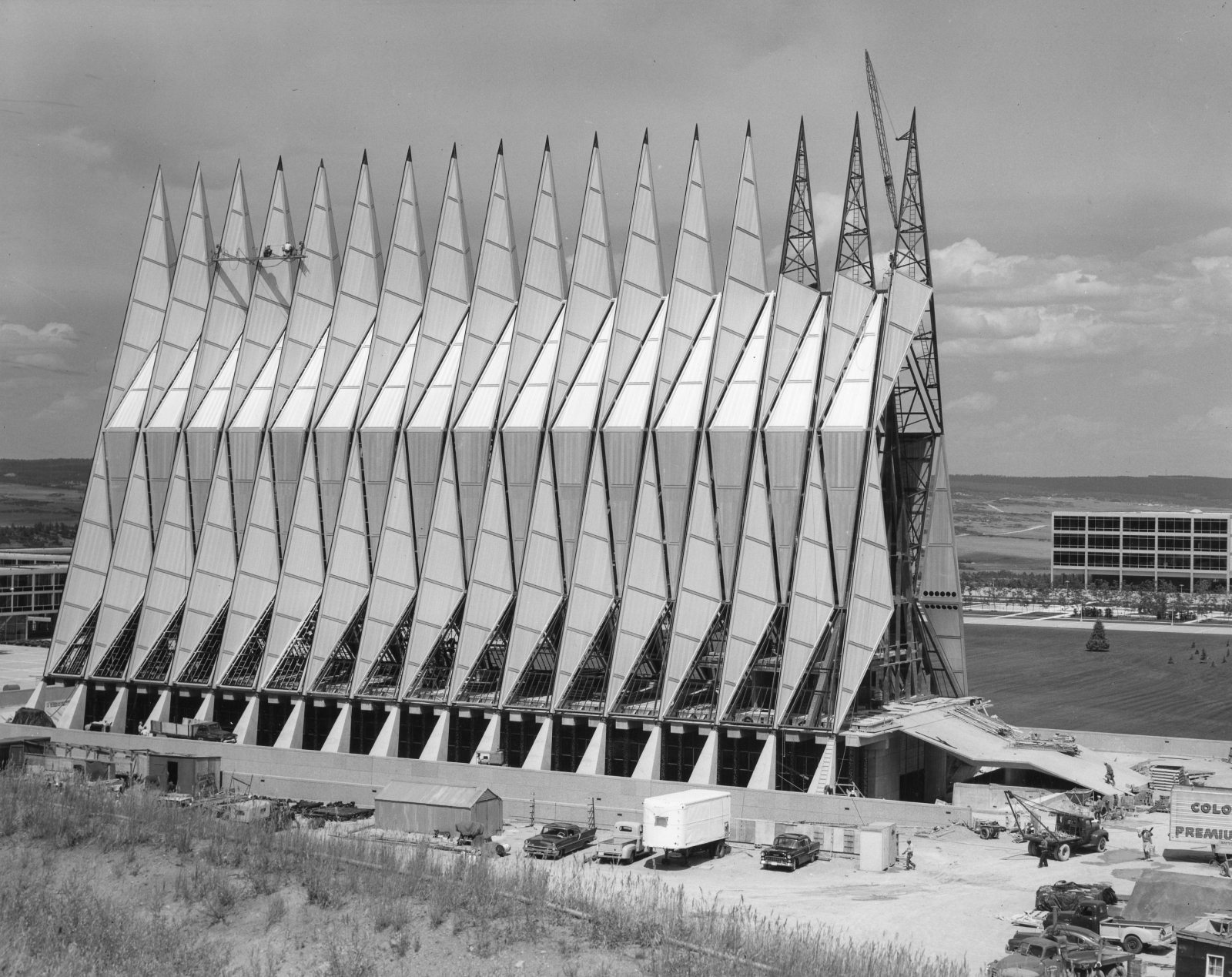The Chapel became one of the first structures intentionally designed to accommodate multiple faiths under one roof within a military academy. Its innovative architecture and commitment to religious pluralism marked a significant development in the evolution of interfaith worship spaces in the United States.
“I had designed one little extra chapel... It ended up being a Buddhist temple for a while, a Muslim mosque for a while . . . possibly a Seventh-Day Adventist church,” Netsch remarked while talking about the religious aspect of architecture.
Netsch’s iconic “field theory” emerged and took shape during the design process of the Cadet Chapel. It was later used in many of his designs, including the University of Illinois at Chicago (UIC).
While sketching in Chicago alongside his engineer, Netsch discovered the architectural potential of stacked, inverted tetrahedrons. These interlocking geometric forms became the foundation for the Cadet Chapel’s soaring structure, with light streaming through narrow seams of glass between each element. Initially envisioning translucent onyx to create a glowing, ethereal effect, Netsch’s vision ultimately led to the invention of mirrored glass specifically for the Air Force Academy. The concept of using onyx, though set aside for the chapel, later found a home in SOM partner Gordon Bunshaft’s celebrated design for the Beinecke Rare Book & Manuscript Library at Yale University.
When asked why he used the word “field,” Netsch explained that each design – though seemingly discrete – could be envisioned as a kind of field, like a field of daisies or wheat. These fields were governed by geometric logic and often based on symbolic numerical systems.
“It would depend on what the design is based on. You see how this geometry all connects, all these lines connect. This one is based on a theory of nine, the Hindu number. I grab a number like that. I’m Protestant, so I don’t have a number,” Netsch said while talking about one of his designs.
Netsch grounded the design of the Air Force Academy using the numbers three-and-a-half and seven as modular foundations. Inspired by the proportional logic of Japanese tatami mats – but scaled to suit American dimensions – he applied this system rigorously across the Academy’s horizontal, vertical, and spatial planning.









